El Habib Ben Amara, an architect and urban designer from a tribal ksar (fortified oasis) in Algeria, who’s been working with a partner of ours. He’s an activist against desertification and one of the foremost authorities on sustainable water management in the Sahara.
This is a follow-on article to his recent blog post with us, about how ancient wisdom is being lost in north Africa, and how it could be resurrected to cope with the increasing problems caused by global warming. In the current article, he continues in that vein, by describing how all rainwater can be collected and stored for times of drought – that will increase in frequency as the temperature rises. These kinds of local, community-based actions are needed (rather than large-scale state or corporate projects involving huge amounts of cement), as the spread and increased intensity of deserts globally will affect us all, in terms of food shortages, soil erosion, loss of biodiversity and mass migration.
It has rained across the country in recent weeks. It’s a pity that all this water will go to waste, not without causing damage by flooding our cities and villages, and eroding, ravaging, and degrading our soils, or the little cultivable land that few farmers dedicate some time to. In a few weeks, we will complain about the drought – the ogre – and we will continue to lack water, despite the precipitation of this autumn. Why do some concepts and solutions delay in crossing the Mediterranean and are blocked at our borders? What concepts? The recurrence of extreme drought-flooding episodes, and the degradation of soils and other impacts are due to global climate change, and measures must be taken to limit their risks.
Why is there no Rainwater Recovery Plan? Not through dams and dikes, impossible to plan with the current financial crisis, but through traditional means accessible to all. Let’s collect rainwater in ditches, ponds, and small trenches in the countryside: the solution is obvious, following the scientific argument, advocating for no longer considering rainwater as waste to be drained into sewers via drains.

Will we finally grab a shovel and create conditions on our properties, our neighborhoods, our cities, and villages so that not a drop of rainwater is lost without use?
Would it be fatalistic resignation to endure hunger and thirst, the desertification of agricultural plains after that of pastoral steppes, the incendiary devastation of mountain maquis and forests, after that of the stoic palm groves of the deserts?
It is a vibrant and enthusiastic call, and we must seriously consider the question of rainwater retention and recovery.
1. From drought in particular and climate change in general
According to climatologists’ definition, drought is a natural phenomenon characterized by a lack of water over a sufficiently long period to affect soils and vegetation, and also occurs when watercourses (groundwater, lakes, or rivers) show abnormally low levels. The lack of water accompanied by high temperatures – in summer – will exacerbate the drought phenomenon as there will be more evaporation and plant transpiration (evapotranspiration), which dries out the soils.
Since the 1970s, the areas affected by drought worldwide have doubled. Droughts cause more casualties and displacement of populations than cyclones, floods, and earthquakes combined, according to UN reports. These less spectacular natural disasters are nevertheless less publicized. Drought is the most costly and deadly natural disaster of our time. The decision to mitigate its effects is a concern for governments of all countries exposed to this scourge to develop and implement policies countering it, focusing on early warnings and prevention. The cost of post-intervention is much higher than that of risk management and anticipation measures. Therefore, action must be taken without waiting for the next droughts and their procession of famines and deaths.
Early prevention is an option not to be neglected, situating drought within its global context of planetary climate change, and responding to it with the solutions advocated in scientific research.
In this section, we will outline a program concerning all sectors to ward off the blows of the ogre; this drought that threatens us all; and thus to shake the consciences of citizens, regarding the future jeopardized by the carelessness, ignorance, and negligence of the multiple actors involved in the act of building and planning our cities and territories in terms of water.
2. With urbanization and its apologetic literature, we have alienated rainwater
During discussions on climate change, the focus is on limiting greenhouse gas emissions into the atmosphere from human industrial activity. However, a broad current of researchers agrees that manifestations of climate change revolve around water. Extreme heavy rains, floods, droughts, food insecurity, and rising sea levels are all associated with water.
Water is the origin of all life on Earth; it is the key to climate protection and therefore global security. Humans, in their blindness and ignorance or carelessness in building their habitat, modify watersheds, channel rainwater into sewers, and send it to the sea through concrete conduits and cemented waterways.
They develop large industrial and agricultural practices that require extensive soil drainage, thus limiting the infiltration of rainwater into ecosystems, leading to floods and droughts. According to experts, with climate change, many countries, including ours, will experience more and more such episodes.
According to hydrologist Michal Kravcik, co-author of the book A New Water Paradigm: Water for the Recovery of the Climate, long-term droughts and forest fires in the western United States; harsh winters on the east coast of the United States; subsequent fires and floods in Australia; dramatic typhoons in the Indonesia and Philippines region; extreme droughts and floods in Pakistan, India, Afghanistan; drought and famine in Africa; extreme weather events in Europe and Latin America have a common denominator: water.
Water threatens us at times, other times it completely eludes us, often in the same geographical area and during the same year.
Whether or not CO2 is the main culprit of climate change, it is clear that water remains the foundation of life on planet Earth. Therefore, not a single drop of rainwater should flow into the sea or into deserts without use.
Rainwater is chased out of cities and villages, drained into sewers, and cannot infiltrate the ground. This fact causes rising temperatures and soil dryness. This will promote water evaporation phenomena. In the absence of recovering and taking care of these long-awaited waters, we reap cracks in dry soils in our landscapes, once green lands turned to dust, decreasing rivers, prairie or forest fires, just waiting for an opportunity to wreak havoc…

In these territories, where we have massively waterproofed all surfaces, and prevented rainwater from penetrating the soil, we have disturbed the small water cycle and contradicted a principle of nature that water must infiltrate where it falls. The result is that we have not only extended periods without rain but also significantly reduced freshwater reserves in aquifers. We have accelerated land drying, causing soil degradation and unproductiveness; since water no longer stays there, it erodes nutrients and surface layers of agricultural land, leaving only ravines, furrows, cracks, and dust. Additionally, the dried country produces overwhelming amounts of heat into the atmosphere. This further increases chaos and accelerates the process of converting fertile landscapes into deserts. And it is in arid areas that we find the most vulnerable countries, such as in Africa.
3. The thirst of men, and the extinction of species under the blows of drought
During droughts, the most vulnerable populations (babies, children, and elderly) are at risk of dehydration, which can be fatal. In countries with limited access to water, drought exacerbates the risk of famine and epidemics due to malnutrition; it increases climate migrations of affected populations and can lead to conflicts between peoples.
The levels of rivers, lakes and groundwater become very low, leading to water restrictions for irrigation, domestic water use, or industrial purposes. In rural areas, water may be rationed or even cut off. These water restrictions are put in place to prevent further lowering of groundwater levels and rivers that were already deficient. These restrictions are not always accepted by populations and often lead to friction if not riots, manipulable by extremists and adventurers of all kinds.
In cases of water stress, water reserves are too low to properly irrigate crops, agricultural production decreases, and there is a decrease or loss of harvests, especially of cereals, and a reduction in the income of rural populations. This situation forces many people to move to cities, where they will contribute to increasing already high unemployment rates. After a period of drought, dried-out soils are no longer capable of properly absorbing precipitation, which can cause floods, inundations, and landslides. Erosion, gullies, and ravines form on good lands, and dry winds carry away soils turned to dust.
Dry and dehydrated trees eventually die, and very dry vegetation facilitates the outbreak of fires, emitting harmful gases that pollute the atmosphere and accentuate the greenhouse effect. Drying or lowering the level of watercourses affects the survival of herds and various animals that drink from water points. In urban areas, the demand for electricity consumption increases: fans, air conditioners, and refrigerators. The consequences of drought can persist long after the return of rain: scarce and expensive foodstuffs, limited water resources, eroded soils, and weakened livestock. Droughts are often followed by large-scale floods that catch populations off guard when they are most vulnerable, leading to increased suffering.
With global climate change, drought phenomena are becoming increasingly recurrent, so it is important to know how to manage reserves in such cases and, above all, how to adapt to a rapidly changing climate. That is why it is important to anticipate these climatic phenomena through preventive measures and better water management.
4. Advance planning, comprehensive and holistic, is necessary
FAO reports – the Food and Agriculture Organization of the United Nations – call for strengthening long-term planning and emphasize the need for a more proactive approach based on risk reduction to strengthen resilience to droughts and have called for a fundamental change in how drought is perceived and managed in the Middle East and North Africa. The region is particularly prone to drought waves and is among the most affected areas by water shortages worldwide, with the desert representing three-quarters of its territory.
The financial, administrative, and technical capacities needed to cope with drought in the Middle East and North Africa regions are inadequate, making farmers and herders – the first and hardest hit during drought waves – even more vulnerable.
Farmers and herders are facing growing challenges as water becomes increasingly scarce, land degrades and crumbles further, and soils become increasingly fragile.
Preventing or mitigating the impacts of drought is less costly than organizing an intervention to deal with it. It is also necessary to strengthen coordination at the highest level of ministries when planning a drought management strategy.

If we want to tackle the consequences of climate change, we have nothing left but to restore the natural water cycle at the root of the damage; seems to be the leitmotif of a broad current of researchers. Climate change and the gradual warming of temperatures have a direct impact on the nature of soils, which struggle to retain moisture. The trend is indeed, in recent years, towards repeated drought episodes, especially in the summer.
The increase in temperatures is expected to exacerbate soil drying in the future. Projections have been made regarding their humidity. They show us that by 2050, we could have an extension of the so-called dry soil period of about 2 to 4 months and a reduced wet period in the same proportions.
We have been sensitized, with evidence, to the role of trees in countering climate change. In forests, professionals are considering alternatives to save their wooded areas. Diversifying plantations and introducing species accustomed to higher temperatures.
In recent years, trees have been regularly under water stress: their roots have great difficulty finding water in increasingly dry soils, with multiple consequences for natural areas and human activities. Similarly, the areas affected by drought have increased over the last decades. Current agricultural policies contribute to soil degradation and impoverishment and must be reviewed to mitigate the impacts of drought. Policies are also being implemented in certain areas to create more aquifer areas to better protect soils. Work can take place in the agricultural sector to cultivate water-efficient species and water-saving systems.
5. Scientific research as the basis for planning solutions
Freshwater on continents is vital. Therefore, it is necessary to retain rainwater wherever one lives, works, and cultivates, so that there is a permanent recovery of water resources in all basins of the world.
The plan to saturate the small water cycle by conserving rainwater on land is, from the researchers’ point of view, a revolutionary solution to climate problems in general and drought in particular.
Since water and vegetation play a decisive role in transforming solar energy falling on the earth’s surface, they are clearly involved in a country’s water cycle. Practical measures for rainwater harvesting are solutions that will emerge from the acceptance of the new water paradigm for public sector institutions as well as for civil and commercial sectors.
According to the well-known principle of “thinking globally, acting locally” sustainable solutions at the local level contribute to stability at the regional, continental, and global levels.
Currently, the individual is placed in the position of a water consumer and for the most part is not aware of his share of responsibility for water protection or the opportunities or threats that water (or its absence) can bring. And yet, every roof and every courtyard of a family home is a micro-watershed on which the annual sum of precipitation represents a surprisingly large volume of water. Water is an asset that citizens can use to improve their own lives in various ways. However, without any profit, quite the contrary, by spending huge sums, he can pour it into rivers and into the sea and thus slowly contribute to the desertification of his own environment and microclimate and, ultimately, to microclimate changes.
The more water there is in the atmosphere, the stronger its moderating effect on temperatures, and the fewer discrepancies over time. The less water there is in the atmosphere, the weaker its moderating effect on temperatures, and the more extreme the discrepancies over time. Where water is lacking in the soil and in the atmosphere, extreme thermal conditions generally prevail. The solution lies in the return of lost water to the continents, and preventing it from going into the seas or deserts. If, in the coming years, we create conditions for the cyclical retention of rainwater on all continents, within 10 years, the climate will be healed, and the specter of desertification stopped. A dried-up and infertile landscape will become productive under the influence of retained rainwater, with enough water for humans, food production, and nature. This condition is achievable within a 10-year horizon if a national program of rainwater retention in the country already damaged by the effects of past droughts is launched now. This recovery of the original distribution of precipitation will lead to a climate recovery, a reduction in extreme weather events, a reduction in flood and drought risks, an increase in groundwater reserves, and an improvement in agricultural production.
We will also succeed in stimulating food security, developing the local economy, and creating thousands more jobs. Programs launched in the 2000s, as part of agricultural development, make no mention of any rainwater recovery measures and exclusively rely on groundwater: anticipating overexploitation of aquifers.

6. For drought prevention, a radical change is necessary
Water scarcity is a global domestic issue: all continents are affected by water stress problems, episodically or regularly depending on the areas and their climates.
Scenarios on long-term water stress in the world remain rather pessimistic.
Population growth, urban area development, limited natural resources, and climatic hazards can, to some extent, be mitigated.
The revision of laws and greater communication have allowed for the evolution of practices at all levels worldwide. Becoming aware of our practices is an essential factor.
For domestic uses, economy, rather than abundance, must be the rule, instilled, and even hammered in morning and evening through the media, but also, repairing any water leaks without delay, only marketing water-saving sanitary equipment, and limiting the consumption of products whose manufacturing requires a lot of water…
For agricultural uses, this involves changing irrigation practices, choosing crops that are less water-intensive. For industrial uses, this involves improving operating methods to be more water-efficient. For communities, this involves maintaining networks and repairing leaks, as well as collecting rainwater for watering green spaces and sports fields, and purifying wastewater.
Planting hedges, wooded areas, and tree-lined avenues that consume little water. The objective of these plantations, which are integrated into the heart of the plot, is notably to combat droughts. A well-known process used in hot countries is the oasis, which is a typical example of wooded areas composed of shrubs and different tree species. Trees help block wind that promotes evaporation. The rooting of these vegetative strips also allows water to better penetrate and infiltrate the soil. They also retain water in the field that would otherwise run off further. They further promote shaded areas on the plot, which helps retain heat, and thus water. Hedges and trees in fields are used in hot countries (in the southern part of the country). This is a solution that helps combat droughts: explain specialists.
Vegetation in fields provides many services. More and more people are aware that droughts pose a real danger and that these wooded areas are useful. It will also be necessary to use more forest species in plots because they are less water-hungry but contribute to cooling temperatures and soil stabilization through their shade.
It is high time to reflect on and debate this new paradigm, which considers rainwater a value that must be protected unconditionally, rather than driven away to the sea or deserts via drains, sewers, or wide concrete conduits. We cannot assume that all precipitation will be beneficial; it is quite the opposite, under the effects of massive urbanization and the widespread impermeabilization of urban soils; under the effect of soil degradation due to erosion, deforestation, desertification, and the effects of droughts in hot seasons, we witness more floods and enormous water losses.
Precipitation is only effective and beneficial if water recovery measures are generalized in plains, steppes, mountains, and deserts, in cities and countryside, in residential areas, and different constructions, if the rate of urban soil impermeabilization is reduced to a minimum. We must encourage water retention when rainfall, no matter how small, is forecasted. We have an interest in retaining rainwater and letting it infiltrate to fertilize soils and “green” spaces, instead of letting it run off, collecting all pollutants in the streets, and especially causing damage before being lost in the sea or deserts. What a waste.
All these conditions should urgently be reflected in the urban planning instruments (PDAU, and POS) of our municipalities, and especially in the revision of water regulations.
7. Reconciling delicately with nature: rainwater and trees
Drainage and evacuation of rainwater from urbanized lands without the possibility of infiltration or retention are accompanied by a decrease in vegetation; which influences the rainfall regime and increases temperatures. Thus, we have gradually become witnesses and victims of the degradation and desertification of vast stretches of land that were once fertile.
One of the conditions for mitigating climate change is the renewal of basic ecological functions that are closely related to the return of water and vegetation to the land. The primary functions are the gentle dissipation of solar energy through water circulation, the absorption of carbon dioxide, and the conservation of nutrients and substances on land. The return of vegetation and water to the land can only have a positive effect.
With rational water and vegetation management, we can slow down climate change at the local level; if we can act in the same way in larger regions, we may expect a slowdown in global climate change.
The deforestation of lands and the lowering of the quality of forest vegetation are accompanied by an increase in the speed of surface runoff of rainwater and water from snowmelt in the given areas, as well as rapid soil erosion.
Vast fields without natural barriers; protected vegetation strips limiting surface water runoff; have been presented as great progress. Additional irrigation of these fields does not replace the need to conserve rainwater on the lands. Along with changes in microclimatic conditions on these agricultural lands, the speed of surface runoff of rainwater has also increased, as has erosion and soil erosion caused by water associated with soil destruction and displacement. All of this has led to the degradation of quality, and even devastation of the land and the emergence of a desolate soil. Among the mentioned processes, the most serious phenomenon is the displacement and loss of soil.
While soil creation is counted in hundredths or even thousandths of millimeters per year, erosion occurs at a much faster rate. Another program should be the urgent need for afforestation, especially of desolate lands, which would help fulfill the erosion and water-retention functions of trees on these lands. Layers of arable land are uncovered and carried away by floods and winds, and no new vegetal land is created in its place.
The main importance of terrestrial vegetation for the climate lies in its influence on the transformation of solar radiation. Several researches approve and confirm that plants, especially trees, are thus the perfect system for Earth’s air conditioning. On a sunny day, a tree with a crown diameter of 20 meters cools the air with a power comparable to that of over 10 air conditioning units. The tree is at the same time “powered” only by solar energy, is made of recyclable materials, requires minimal maintenance, and emits water vapor regulated by millions of stomata responding to heat and moisture in the environment. The essential thing is that solar energy related to water vapor is carried and released by condensation in cool places. It thus balances the temperature over time and space, unlike a refrigerator or air conditioner, which releases heat into its neighboring environment. A tree, unlike a refrigerator or air conditioner, is also completely silent, and absorbs noise and dust.

It is necessary to insist, at the highest level, on the ecosystem services rendered by nature-based solutions and natural water retention methods that bring many benefits, both to biodiversity and to human societies, with a reduction in drought and flood risks and an improvement in water quality.
8. Rainwater retention is the appropriate measure against drought
Once it is understood that rainwater is not a nuisance that must be quickly eliminated, nor waste to be drained away via drains. Once the absurdity of an inadequate, inconsiderate, thoughtless, and limit-irrational entropic model of systematic rainwater evacuation and drainage toward sanitation networks is grasped. It will be noticed, by the way, that this drainage is outdated, and that for decades we have introduced into urban planning worldwide the concept of sustainable drainage “Sustainable Urban Drainage – SUD-“, where rainwater management is based on the principles of: Slow down, Retain and Infiltrate, using vegetation for purification; and at the same time, develop this green infrastructure for its intrinsic virtues; which we will never tire of repeating; carbon sequestration in the soil, climate cooling, CO2 absorption, bait to attract other rains, and enhancement for well-being.
Rainwater will be delicately maintained where it falls: put an end to runoff on public roads, since vegetated ditches and ditches will collect all water falling in the area; each subdivision will have its network of green ditches and retention ponds; each construction will welcome rain not into its sewers but rather into a garden or reservoirs. Do we want to fight against permanent water stress for people, nature, food reserves? Let’s start by reducing heat islands and planting rain, which will provide ecosystems reducing evaporation and the accumulation of CO2 in the atmosphere. The old model has led to long-term economic, social, environmental, and climate collapse. The old water paradigm has dominated since the industrial revolution, and it is no longer sustainable as it degrades landscapes and watersheds, thus modifying hydrology.
We must apply integrated solutions for rainwater and watersheds, by teaching water retention techniques to our engineers, urban planners and agronomists in recycling workshops involving all relevant operators. It is about drawing inspiration from the enlightening experience of India to solve drought problems, a distressing and desperate experience when compared to the vegetative and arrogant apathy in which our society complacently indulges, confident in outdated incantatory injunctions and self-suggestions, that everything will be fine.
For the last few years, thousands of Indian villages participate in an annual competition on rainwater retention measures, launched by a national film star, sufficiently sensitized to drought and water scarcity problems. The results and the approach are surprising to the extent of the mobilization of all – women, old people, and children – and the rudimentary means used, shovel, and sometimes kitchen utensils: objective to arrange ditches and dig small retention ditches for rainwater in the fields. In a few years, millions of cubic meters have been thus saved from disappearing into nature towards the seas and deserts, not without having degraded soils and caused floods.
By applying the holistic model, i.e., based on the integrated approach to rainwater management, the Indians understood that rain embodies the essence of life that we must keep it in the forest and agricultural fields and manage these waters in urban areas away from sewers, by reducing runoff and ecosystem degradation. The new water paradigm has led to an abundance of water for people, nature, food, the economy, groundwater, and a healthy climate.

There are significant additional benefits to retaining rainwater in ecosystems as project participants testify: the occurrence of moderate rainfall becomes more frequent, and there are fewer extreme weather conditions, a reduction in climate overheating, abundance of photosynthesis, and increased production of agricultural land becoming more fertile with a progressive reduction of CO2 in the atmosphere.
Will we finally pick up a shovel and create conditions on our properties, neighborhoods, towns, and villages so that not a drop of rainwater is lost without use?
It is a vibrant and enthusiastic call; we can only seriously consider the question of rainwater retention or recovery.
It is time to act.

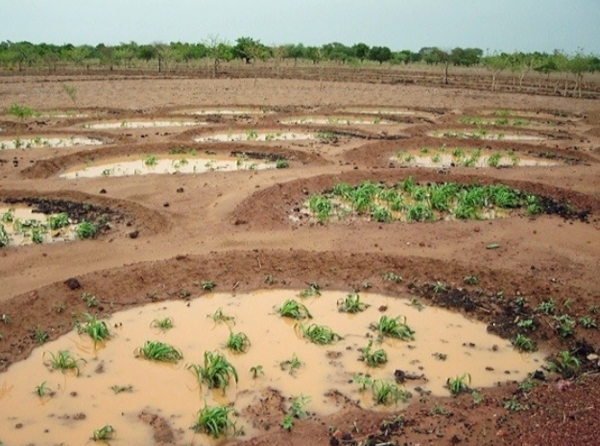
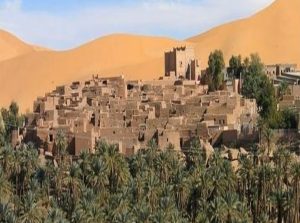
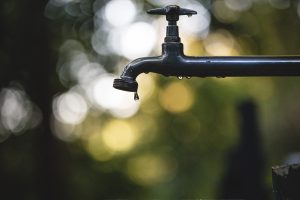
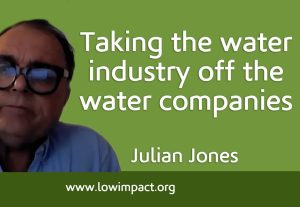
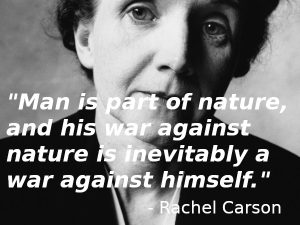
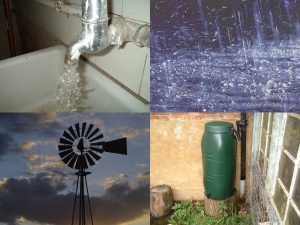
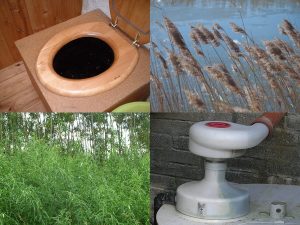


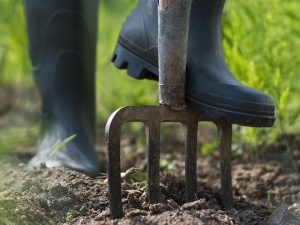

1 Comment
The more I think about it, I think you’re right that issues around water are central to the destruction of our one-and-only biosphere. Toxicity (via pesticides and the toxic chemicals that are in everything), overharvesting (esp. fish, tropical hardwoods), removal of nature for cities, roads, airports, industry, monoculture etc. are all important factors, and global temperatures increase relentlessly every year, with nothing in place to stop it, or even slow it down. All we can do now is to prepare, in communities, for what’s coming. These aren’t directly water-related, but you mention drought, famine, forest fires, soil erosion, sea-level rises etc. – which are. But also, as temperatures increase, more water is evaporated from the oceans, and the amount of water vapour in the atmosphere increases (water vapour is a much more powerful greenhouse gas than CO2), which will make temperature increase accelerate.
Arctic permafrost will continue to melt, release all of its methane – also a more powerful gg than CO2, and all the polar ice will eventually be gone, meaning that less incoming solar radiation will be reflected into space, but will be absorbed instead.
All these are water-related issues too.
And of course, under this system, no fossil fuels will be left in the ground. It will all be burnt as long as it makes money.
Happy times! But improvements in the human condition often (always?) come after times of great crisis. The biological annihilation (National Academy of Sciences of the US – https://www.pnas.org/doi/abs/10.1073/pnas.1704949114) that we’re going through will be ugly, but it may bring communities closer together, to form the basis of something better when/if the dust settles (although the dust will settle on a much hotter, more desertified, much less biodiverse planet).